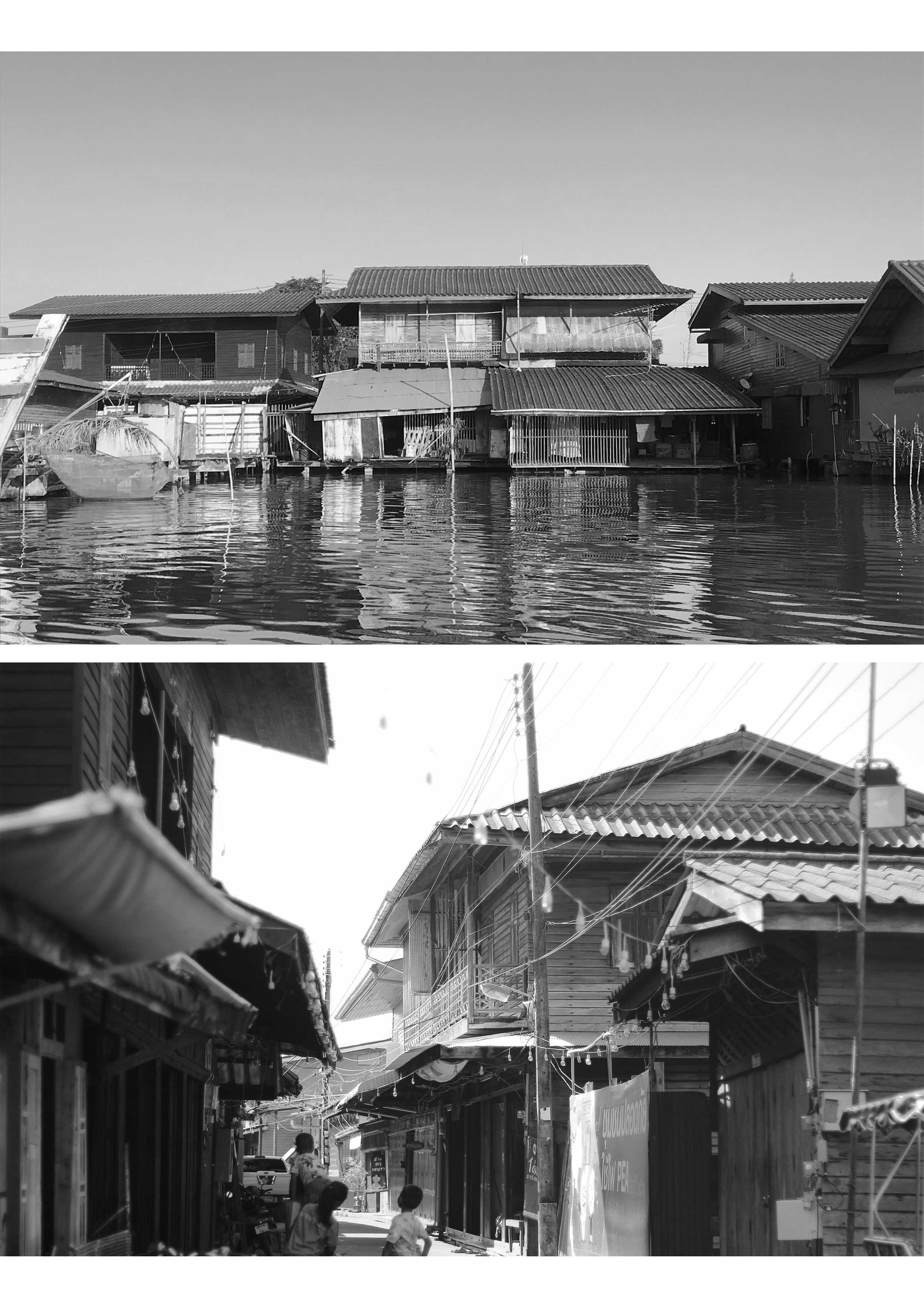Value identification of the traditional row-houses along Prasae River for conservation
Keywords:
conservation, urban landscape, row-houses, vernacular architectureAbstract
Prasae riverside community is a traditional community where Thai-Chinese group has settled in groups of wooden row-houses along Prasae river for over a hundred year. The main occupation of local people is the distribution of consumer products and traditional fishery. These days, although the local residents have increase their awareness in historic, cultural and architectural values and want to preserve those values, they cannot resist the rapid changes caused by urban development. Consequently, these change caused the identity and values of the community to gradually disappear. According to the field surveys, interviews of local residents and the value process, it can be concluded that the conservation objective of the Prasae traditional row-houses is to maintain the significant characteristics of the area, that are traditional economic activities based on a simple way of life. The significant values that should be preserved are comprised of values from tangible and intangible
cultural heritage. Values from tangible cultural heritage include: 1) the values based on historic urban landscape: including historic urban elements and the settlement patterns on the mouth of the river that are suitable with landforms, climate and vegetation; good connection between the activities in the domestic spaces and those in public walkways; and the beautiful sceneries of traditional row-houses properly associated with natural surroundings. 2) the values based on architectural styles, archictectural elements and structures based on construction periods (during 40 - 100 years) 3) the values according to the usages of the row-houses, including traditional uses as well as new uses that mostly in the form of tourism activities. The values from intagible cultural heritage supporting the persistence of the tangible heritage should be preserived include historical evidence beliefs, pattern of living and local knowledge for living in harmony with nature. The ways to presence these relues the management of changes, cover a course of action that will lead to a balanced way -supporting a good quality of life, while enhancing adaptive uses according to the current needs.
References
Cullen, G. (1995). The concise townscape. London: Architectural Press.
Feilden, B. M. & Jokilehto, J. (1998). Management guidelines for world cultural heritage sites. Rome: International Centre for the Study of the Preservation and Restoration of Cultural Property.
Lynch, K. (1977). The image of the city. Cambridge: The MIT Press.
Office of natural resources and environmental policy and planning. (2012). Khumue karn anurak singwaetlom silapakam praphet yan chumchon kao. (In Thai) [Cultural environment traditional communities conservation handbook]. Bangkok: Property print company.
Orbasli, A. (2007). Architectural conservation: principles and practice. London: John Wiley and Sons.
Pendleton, R. (1936). Rayong changwat (Thailand), boardwalk in Pra Sae. Retrieved January 15, 2018, from https://collections.lib.uwm.edu/digital/collection/ agsphoto/id/10813/rec/30
Phiraphatnakun, P. (2014). Karn sueksa sathapattayakam phuen thin chumchon pak nam Pra Sae changwat Rayong. (In Thai) [A study vernacular architecture of Pra Sae community, Rayong province]. (Research report). Bangkok: Rajamangala University of Technology Tawan-ok.
Thetsaban tambon mueang Klaeng. (2002). Mueang Klaeng khong rao mueang kao bap chon. (In Thai) [Our city of Klaeng ancestral old town]. Rayong: Author.
Thetsaban tambon mueang Klaeng. (2003). Mueang Klaeng. (In Thai) [The city of Klaeng]. Rayong: Author.
Thinbangtieo, O. (2016). Karn sueksa prawattisat setthakit karn thongthin duay withi karn mueang thongthin duai withikarn prawattisat boklao: koranee sueksa tambon Krasae bon amphur Klaeng changwat Rayong. (In Thai) [A study of oral history of local history of economy and politics: case study Krasae bon subdistrict, Klaeng district, Rayong province]. Burapha Journal of Political Economy, 4 (2), 1-27.



